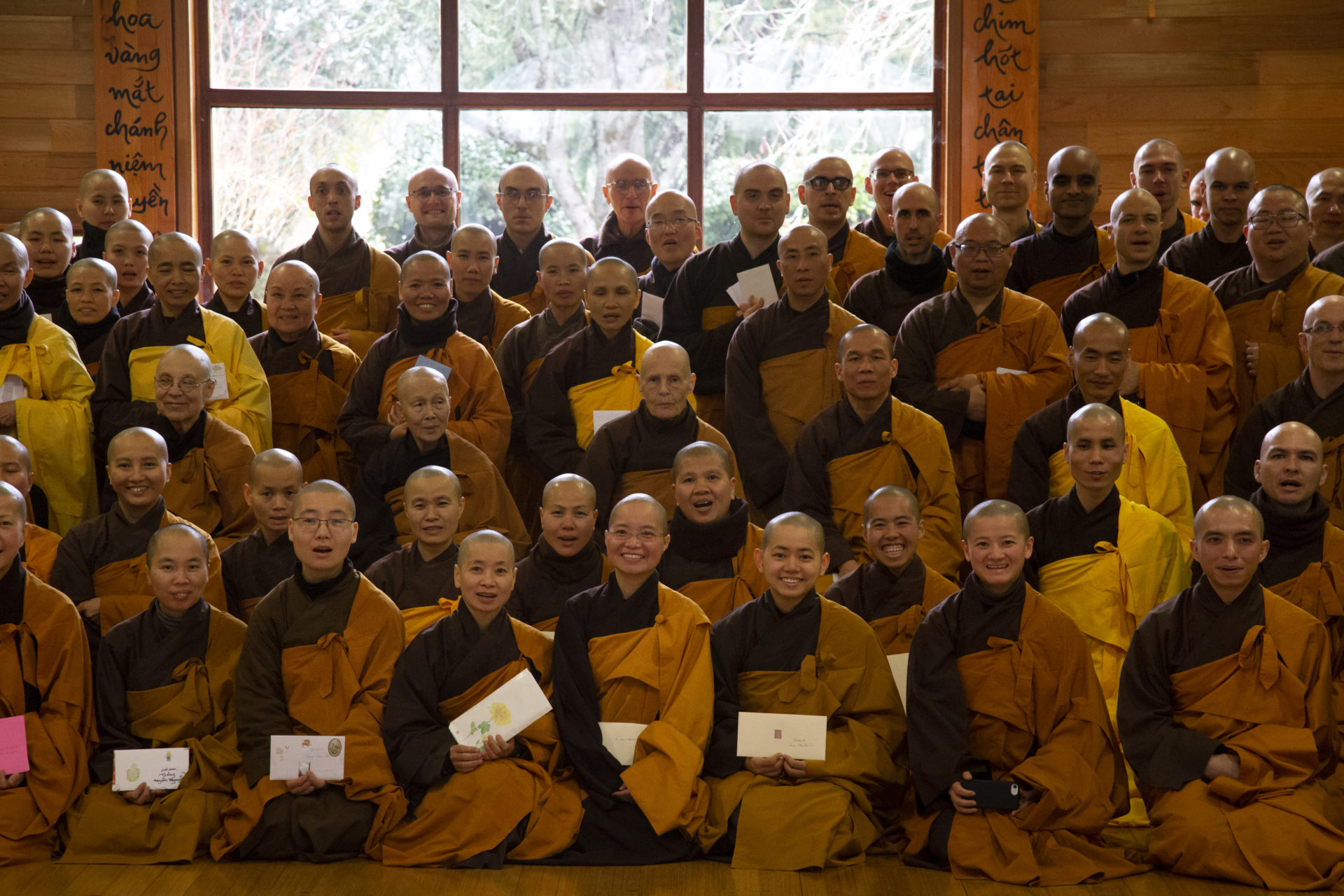“I Must Change My Life”
In a recent episode of Tricycle Talks, novelist Charles Johnson discusses why he believes that art should force us out of our usual ways of seeing the world. The post “I Must Change My Life” appeared first on Tricycle:...

In a recent episode of Tricycle Talks, novelist Charles Johnson discusses why he believes that art should force us out of our usual ways of seeing the world.
Interview with Charles Johnson by James Shaheen Mar 02, 2023 Photo by Crystal Riley Brown
Photo by Crystal Riley BrownCharles Johnson writes every novel as if it’s the last thing he’s going to do. He believes that art holds the power to free us from our habitual ways of viewing the world, and he structures each of his novels around a core philosophical question. Since the publication of his first novel in 1974, he has published ten novels, three cartoon collections, and a number of essay collections that explore Black life in America, often through the lens of Buddhist literature and philosophy.
In a recent episode of Tricycle Talks, Tricycle’s editor-in-chief, James Shaheen, spoke with Johnson about his path to writing, how Buddhism finds its way into his work, and why he believes that art should liberate us from calcified ways of thinking and seeing. Read an excerpt from their conversation below, and then listen to the full episode.
James Shaheen: You’ve worked as a novelist, essayist, screenwriter, professor, philosopher, martial arts teacher, and Tricycle contributing editor, but before all of that, you started out as a political cartoonist. How did you get involved in cartoons?
Charles Johnson: I started publishing as a cartoonist when I was 17 years old. I could draw when I was a kid. It was my passion. I came under the wing of a well-known cartoonist at the time, Lawrence Lariar, and took his two-year correspondence course. When I was 17, I started publishing. The first thing I published was a series of illustrations for a magic company in Chicago. For seven intense years, I devoted myself to being a cartoonist and illustrator. A lot of my work was in the Black press in publications like Jet Magazine and Black World.
I majored in journalism as an undergraduate, which gave me a chance to draw and write. For the program, I had to take a required course in philosophy. That was the beginning of a new passion for me. I was introduced to logical fallacies, which I’d heard all my life but didn’t have a name for, and also the philosophies of the pre-Socratics. I was seduced. So I decided after I was finished with my journalism degree, I would stay in school, get my master’s degree in philosophy and then ultimately my doctorate in philosophy. I focused on continental philosophy or phenomenology. But very early in my life, I was exposed to Eastern philosophy and Buddhism. I first practiced meditation when I was 14 years old. It was one of the most powerful experiences I’ve ever had. I decided that since I didn’t have a teacher, I would study Eastern philosophy as my secret pleasure. Buddhism has been a part of my life since my earliest teens.
How did you go from being a cartoonist to writing novels? All of the arts are interconnected, just as we would say in Buddhism that everything is interconnected. I was always a big reader. All the way through high school, I made myself read at least one book a week that had nothing to do with my schoolwork. Some weeks it became two, and some weeks it became three, because reading stories fed my imagination as a cartoonist. In the late ’60s, all my friends were involved in the arts in one way or another. I had friends who wanted to become the next Beatles and the next Rolling Stones. I had another friend who wrote six novels that never got published. We collaborated sometimes on comic strips for our college newspaper. So I was in an environment that was bubbling with creativity.
One day, around 1970, I had an idea for a novel, and it wouldn’t let me sleep at night. I kept thinking of scenes. And so the only way to get rid of it was to sit down and write it, which I did over the course of that summer. That was the beginning of novel writing for me. I wrote six novels in two years, and with each novel I tried to improve.
In 1972, I came into the orbit of novelist John Gardner, who was just on the rise at that time. He had published a critically acclaimed novel called Grendel, and in 1972 he published his first bestseller, The Sunlight Dialogues. John took me under his wing. I knew nothing about the literary world. I wrote my seventh book, Faith and the Good Thing, in nine months with him looking over my shoulder. It became my first published book. At the time, I thought that nine months was an incredibly long period of time to do anything. After that, I began to realize what was at stake with every novel that I did. I spent five years on my next book, Oxherding Tale, and six years on the novel after that, Middle Passage. For the following book, Dreamer, I spent seven years studying Martin Luther King Jr. in every way that I possibly could, and I did two years of research before I wrote the first paragraph.
You wrote that with Faith and the Good Thing, your aim was to enrich the tradition of African American philosophical fiction. Can you say more about this genre and how you view the relationship between fiction and philosophy? The disciplines of philosophy and literature have been united since the time of the ancient Athenians. If you look at Plato’s Dialogues, they are dialogues. They occur in a dramatic form. Over the past two thousand years, there were many writers who understood instinctively that philosophy and literature were sister disciplines. Wordsworth understood that. Augustine understood that in the Confessions. T. S. Eliot truly understood it. There is a tradition of what is called philosophical fiction and philosophical poetry. But in America, we have had currents of anti-intellectualism, so we don’t find that many people who have devoted themselves to the philosophical questions in our time. I think John Gardner was one of those people, especially with his novel Grendel, which is a kind of sendup of Sartrean existentialism.
When I’m talking about philosophy in literature, I mean literature that asks traditional philosophical questions without coming to a solution. Every one of my novels has a core philosophical question at its center. In Faith and the Good Thing, the question is “What is the good?” With Oxherding Tale, the question at the center of the novel is “What is the self?” In Middle Passage, the question is “Where is home?” And in Dreamer, the central question that kept me working on the book for seven years was “How do we end social evil without creating new social evil?”
Throughout your career, you’ve been meditating. What is the relationship between your meditation practice and your writing? Do you view writing as a spiritual practice? Whatever creative work I’m doing is an extension of my spiritual life. My work is informed by it. After forty-two years of meditation, I see everything as part of my spiritual practice. Whether I’m engaging with my grandson or whether I’m going to the supermarket and talking to the person checking out my groceries, I try to be in a place of spiritual consciousness all the time. Before we started [this interview], I sat on my tattered and worn zafu and had my formal sit because I would not do a session like this until I had cleared my head and spirit. When I get up off my cushion, I want to have that same consciousness throughout the day in everything that I do. That includes creative work as well.
We recently had the writer Ben Okri on the podcast to discuss his latest novel, and he spoke about how art can help us face what we refuse to see. In his case, he talks about the legacies of racism and oppression. I’m curious if this resonates with your own experience, especially since you’ve written so much about the histories of injustice in the United States. Yes, it does resonate. My position has always been that the goal of art should be the liberation of our perception. It should liberate us from calcified ways of seeing and even being. There’s a Rainer Maria Rilke poem that I have always loved since I was a teenager. In the poem, a viewer is looking at a Greek statue. The statue is partly shattered. It isn’t completely there, but it’s beautiful. The last line of the poem is the viewer thinking, “I must change my life.”
That’s what art should do to us. A reader or viewer should not come out of a work of art as clean as they went into it. The same is true for the writer. I write every novel as if it’s the last thing I’m ever going to do. I’m willing to spend seven years on a novel if necessary as a way of trying to clarify things for myself and for the reader.
![]()
Thank you for subscribing to Tricycle! As a nonprofit, we depend on readers like you to keep Buddhist teachings and practices widely available.
This article is only for Subscribers!
Subscribe now to read this article and get immediate access to everything else.
Already a subscriber? Log in.

 Tfoso
Tfoso 































